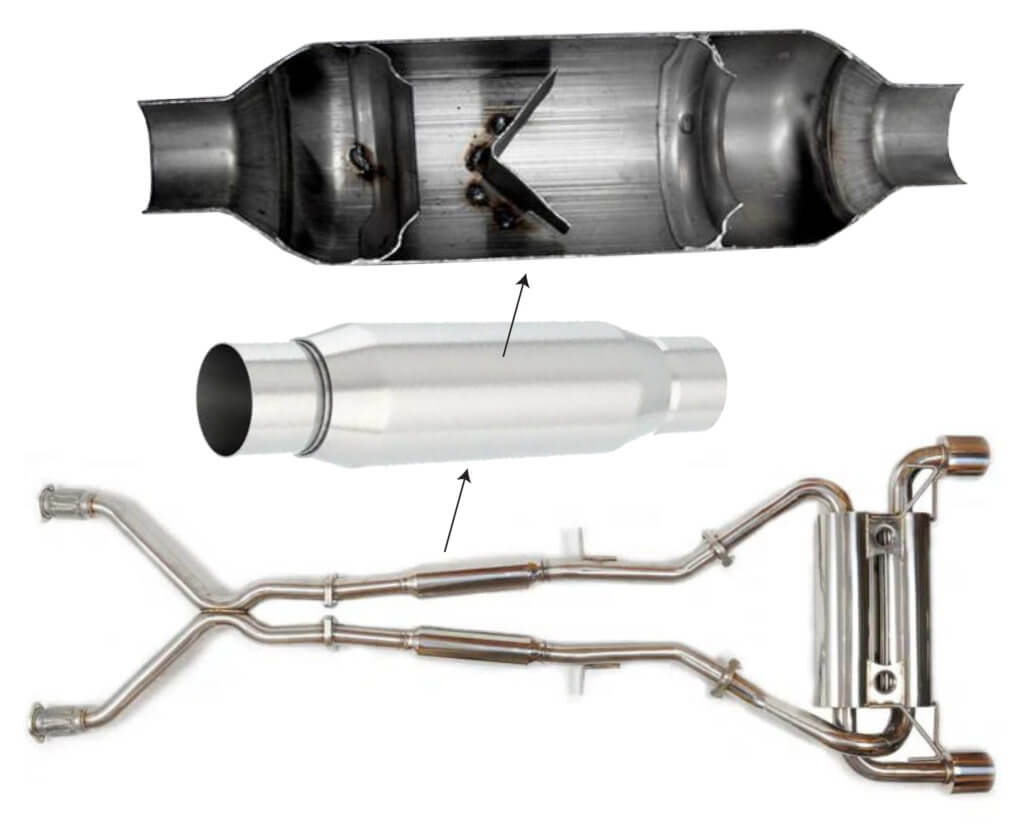What is an exhaust resonator
Why carmakers install an exhaust resonator
An exhaust resonator reduces low frequency droning noise from the engine. As cylinders fire to produce power, pressure pulses travel through the exhaust pipes. The pulses contain a broad spectrum of sound wavelengths. Without any dampening, the frequencies around 30-60hz are most noticeable as bothersome, sustained droning.
Inside the resonator, slots or chambers are specifically tuned to amplify and dissipate these unpleasant low-end notes. As sound waves pass through, some are absorbed while mid and higher frequencies transmit onward. This attenuates the most offensive resonances without silencing the exhaust note completely.
A muffler reduces exhaust noise volume, but an exhaust resonator changes the sound of the exhaust. It’s mostly a hollow tube with a few baffles that cause it to act like “echo chamber” where the exhaust noise bounces off the sides, colliding with one another and cancelling out the highest pitched sound frequencies.

Should you replace a resonator if it rusts out?
Yes. Any muffler shop can install a replacement unit on your vehicle. It does not have to be a factory resonator.
What happens if you delete it?
In a performance vehicle, performing a resonator delete can slightly improve performance by improving exhaust flow and velocity. But this increase in velocity comes at the cost of re-introducing high frequency sound waves and noise.
The downside of performing a resonator delete is that it changes the airflow and velocity which also changes the exhaust scavenging in your engine. In some power ranges, that can actually decrease engine performance.
Faster exhaust flow is not always better. It depends on the engine and the valve design.
For more information on how resonators work, see this article at Walker exhaust
©, 2022 Rick Muscoplat
Posted on by Rick Muscoplat